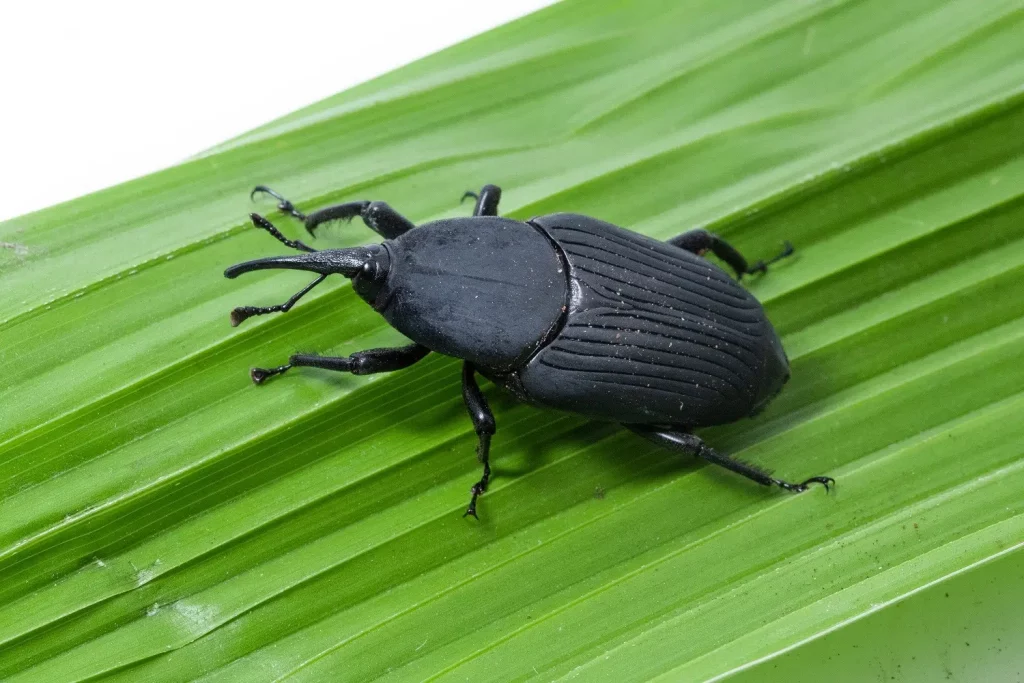USDA invests more than $100 million in fruit fly eradication efforts

New DPR Updates for Soil Fumigant & Non-Soil Fumigant Licensees
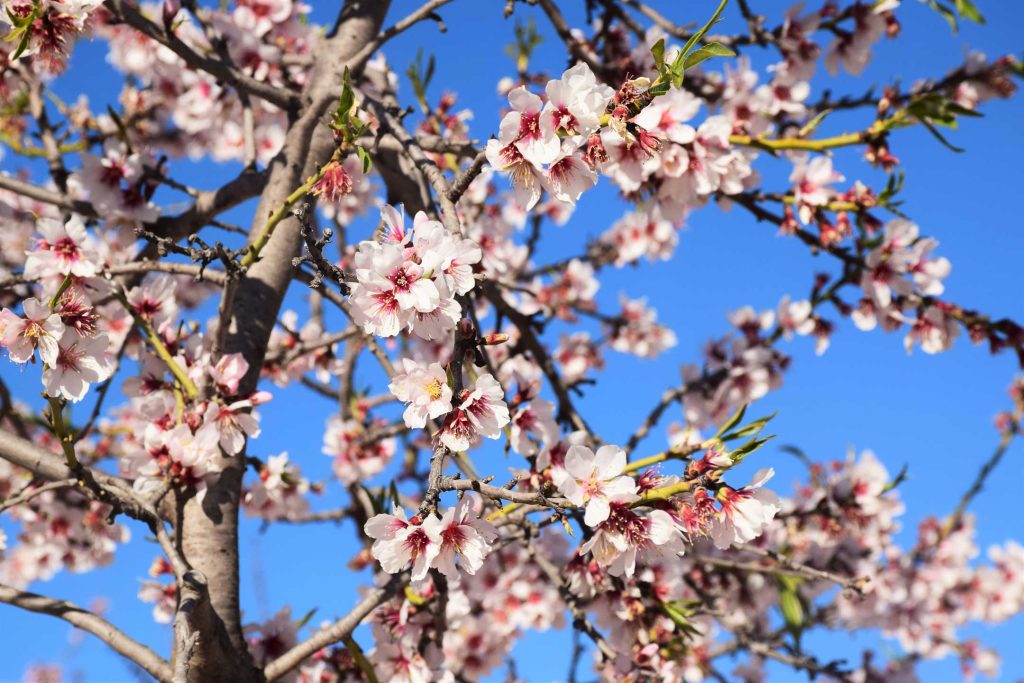
Under the California Department of Pesticide Regulation’s (DPR) recently amended Certification and Training regulations, currently licensed individuals who want to continue to perform pest control using either soil fumigant or non-soil fumigant pesticides next year must obtain the appropriate new licensing category starting January 1, 2024.
The new Soil Fumigation (Category L) is required for individuals who perform pest control using a pesticide labeled as a fumigant to control soil pests in sites including fields, forests, golf courses, greenhouses, and individual tree or vine hole sites. Individuals who previously performed this type of pest control under the Field Fumigation (Subcategory O), which is no longer a subcategory after December 31, 2023, will have to obtain the new Category L if they wish to continue performing soil fumigations.
***Contact your local County Ag Commissioner to confirm that the county is exercising discretion.***
If you are looking for more information on this regulation package please visit –> https://www.cdpr.ca.gov/docs/license/cert_training.htm
APHIS Expands Three Fruit Fly Quarantines

APHIS is applying safeguarding measures and restrictions on the interstate movement of regulated articles
LOS ANGELES CO., Calif. — On November 15, 2023, the Animal and Plant Health Inspection Service (APHIS) and the California Department of Food and Agriculture (CDFA) expanded a Mediterranean fruit fly (Ceratitis capitata; Medfly) quarantine and a Zeugodacus tau fruit fly quarantine in Los Angeles County. Furthermore, on November 21, APHIS and CDFA expanded a Queensland fruit fly (Bactrocera tryoni; QFF) quarantine in Ventura and Los Angeles Counties.
The expansion of the Medfly quarantine is in response to the confirmed detection of an unmated female Medfly by CDFA on November 8, from a trap in an avocado tree in a residential area. As a result of this detection, the Leimert Park area quarantine increased by 8 square miles to 98 square miles. APHIS and CDFA established the original Medfly quarantine on October 18 following the confirmed detection of two flies in the Leimert Park area on September 27, and expanded the quarantine on November 1 and November 7 following detections of additional flies. There is no commercial agriculture in the quarantine area.
The expansion of the Z. tau quarantine is in response to the confirmed detection of two adult male Z. tau by CDFA on November 4, from traps in ornamental trees in residential areas. As a results of these detections, the Stevenson Ranch area quarantine increased by 18 square miles to 128 square miles. APHIS and CDFA established the original Z. tau quarantine on July 11 following the confirmed detection of nine flies in the Stevenson Ranch area between June 7 and July 6, and expanded the quarantine on August 15, September 14, and October 3 following detections of additional flies. There is no commercial agriculture in the quarantine area.
The expansion of the QFF quarantine is in response to the confirmed detection of an adult male QFF by CDFA on November 13, from a trap in an ornamental tree in a residential area. As a result of this detection, the Thousand Oaks area quarantine increased by 14 square miles to 90 square miles. APHIS and CDFA established the original QFF quarantine on October 18 following the confirmed detection of two flies in the Thousand Oaks area on August 23 and October 9. There are a total of 3,379 acres of commercial citrus, avocado, stone fruits, and berries in the quarantine area.
APHIS is applying safeguarding measures and restrictions on the interstate movement of regulated articles to prevent the spread of Medfly, Z. tau, and QFF to non-infested areas of the United States, as well as to prevent the entry of these fruit flies into foreign trade. APHIS is working with CDFA and the Agricultural Commissioners of Los Angeles and Ventura Counties to respond to these detections following program guidelines for survey, treatment, and regulatory actions.
These quarantine expansions are reflected on the APHIS fruit fly website, which contains a description of all current federal fruit fly quarantine areas. APHIS will publish a notice of these changes in the Federal Register.
For additional information on the quarantine areas, please contact Fruit Fly National Policy Manager Richard Johnson at 301-851-2109 or richard.n.johnson@usda.gov.
–Dr. Mark L Davidson
Deputy Administrator
Plant Protection and Quarantine
USDA APHIS
Original article link courtesy of Morning AgClips
(Photo: U.S. Department of Agriculture, Public domain)
Valley Citrus Growers Prepare for 2023 Frost Season
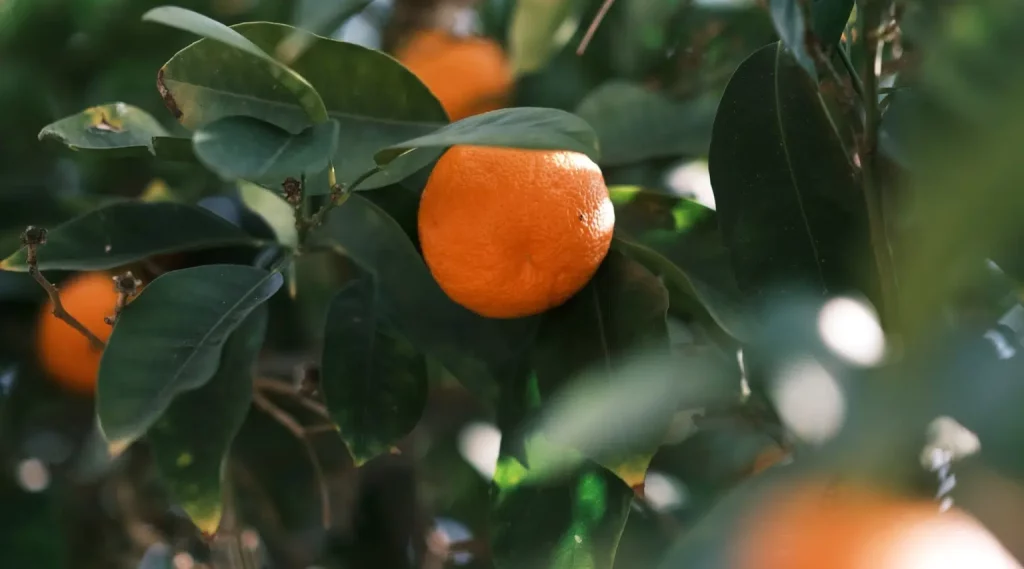
Below-freezing temperatures lasting more than a few hours have the ability to impact all citrus varieties. (Photo by Jeroen van Nierop on Unsplash)
EXETER, Calif. — The 2023 frost season is underway for San Joaquin Valley citrus growers. That means growers will be closely monitoring weather forecasts to prepare for any cold spells that may sweep through the valley in the coming months.
While cold temperatures benefit the crop by maintaining fruit quality, improving color, and sending trees into dormancy long periods of below-freezing temperatures are of concern to growers.
“Cold temperatures aren’t a bad thing for citrus. In fact, they can have positive effects on the fruit and trees,” says California Citrus Mutual President/CEO Casey Creamer. “It’s when below-freezing temperatures last for long periods of time that we get concerned there could be damage to the crop.”
Below-freezing temperatures lasting more than a few hours have the ability to impact all citrus varieties. However, mandarins are often at the greatest risk due to their thin peel.
To combat below-freezing temperatures citrus growers run wind machines and irrigation. These techniques help raise grove temperatures and alleviate any negative effects of long cold periods.
California Citrus Mutual (CCM) aids growers during the frost season by running the Weather Watch Program. Through this program, CCM employs weather stations throughout the region and provides growers with daily citrus-specific forecasts. The program runs from November 15 through March 15 each year.
–California Citrus Mutual
APHIS Expands and Establishes Asian Citrus Psyllid Quarantine Areas in California

This action is necessary to prevent the spread of transmissible disease, such as Huanglongbing (HLB)
SACRAMENTO — The USDA’s Animal and Plant Health Inspection Service (APHIS), in cooperation with the California Department of Food and Agriculture (CDFA), is expanding the areas quarantined for Asian Citrus Psyllid (ACP) in California. APHIS is expanding the quarantine areas described in DA-2014-46 to include the entire Counties of Fresno, Kern, San Luis Obispo, and Tulare counties. Due to the logistical challenges associated with an expanding 5-mile buffer from subsequent detections of ACP, CDFA established county-level quarantines for ACP in California. Parallel to CDFA’s quarantine, due to ACP detections, APHIS is also adding 18 new Counties in California: Alameda, Contra Costa, Kings, Madera, Marin, Merced, Monterey, Placer, Sacramento, San Benito, San Francisco, San Joaquin, San Mateo, Santa Clara, Solano, Sonoma, Stanislaus, and Yolo Counties.
APHIS is applying safeguarding measures on the interstate movement of regulated articles from the quarantined areas in California. These measures parallel the intrastate quarantines that CDFA established. This action is necessary to prevent the spread of transmissible disease, such as Huanglongbing (HLB), by ACP to non‑infested areas of the United States.
The specific changes to the quarantine areas are attached and can also be found at the APHIS Asian Citrus Psyllid (ACP) website. APHIS will publish a notice of these changes in the Federal Register.
For additional information you may contact:
Shailaja Rabindran
Director of Specialty Crops and Cotton Pests
(301) 851‑2167
Shailaja.Rabindran@usda.gov.
Daniel Murphy
Assistant National Policy Manager
(775) 221-9237
Daniel.m.murphy@usda.gov
Quarantined Areas for Citrus Greening and Asian Citrus Psyllid
–USDA APHIS
Original article link courtesy of Morning AgClips
Photo: View of adult Asian citrus psyllids on citrus leaves. Asian citrus psyllids can transmit the bacteria that causes Huanglongbing to uninfected trees. (Credit: H. Gomez, U.S. Department of Agriculture, Public domain)
Palm Weevil Threatens SoCal Palm Trees
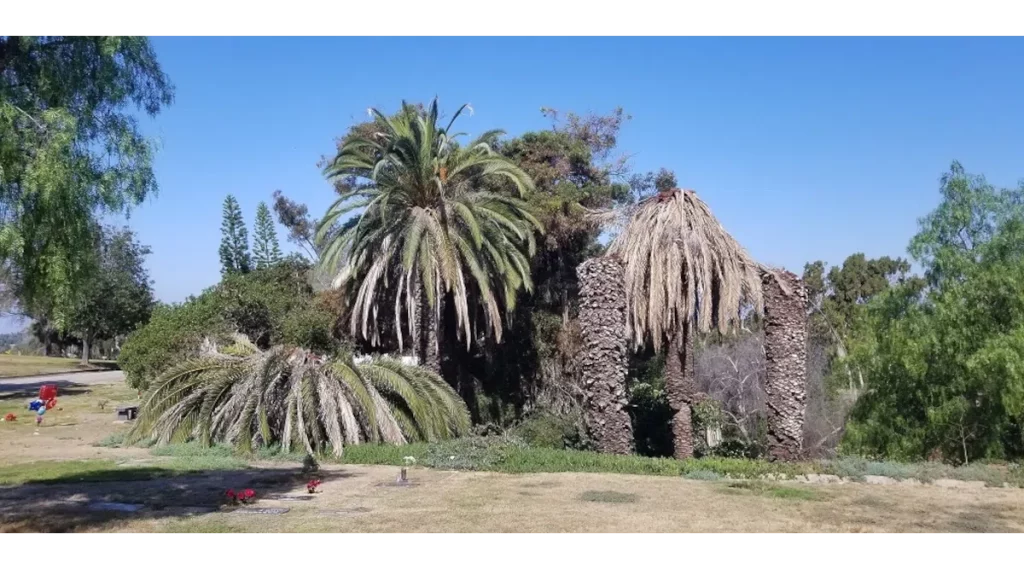
Virtual Meeting Nov. 2 to Address California Pear Pest

EPA Resolves Longstanding Litigation, Ensures Pesticides Remain Available

Farm Hands West: Crout takes new role at Helena Agri-Enterprises

Paul Crout is the new AGRIntelligence, agronomy, and organics manager at Helena Agri-Enterprises. He has been with the company for the last five years and most recently was the senior product manager and agronomist in Templeton, Calif. Crout currently serves as the chairman of CAPCA.
Daren Williams has been selected to lead the PR and reputation management practice at Curious Plot, located in Modesto and focused on increasing the agency’s West Coast presence. He most recently served as director of corporate communications for Valley First Credit Union. He has also held roles with the Almond Board of California and the National Cattlemen’s Beef Association.
The Oakland Board of Port Commissioners has added Jahmese Myres and Stephanie Dominguez Walton to the board. They fill the seats vacated by Commissioners Cestra “Ces” Butner and Joan Story who completed their years of service. Myres is the leadership development director at PowerSwitch Action and Dominguez Walton comes to the Oakland Board of Port Commissioners with more than 25 years in broadcast journalism. Commissioner Dominguez Walton also serves as the president of the board at the Voter Protection Project.
Bruce Bodine has been tapped as the next president and CEO of the Mosaic Co., succeeding James “Joc” O’Rourke, who is retiring. Bodine has held several executive roles with the company, including senior vice president of potash, senior vice president of phosphates, and vice president of supply chain.
The National Association of State Departments of Agriculture has brought on Becky Garrison Warfel as the new director of public policy, leading NASDA’s food safety and nutrition policy committee. Garrison Warfel is a registered dietitian and holds a bachelor’s degree in food and nutrition. She is working toward completing her master’s in public administration from the University of Idaho. She previously served the USDA Center for Nutrition Policy and Promotion as a MyPlate strategic partner.
Keith Gray is the new president of the Forest Resources Association. He previously served as USDA’s associate administrator of the Risk Management Agency. Before that, he was the chief of staff at RMA.
ADM has appointed Regina Bynote Jones as the company’s new senior vice president, general counsel and secretary, effective Sept. 5. In this role, she will oversee ADM’s global legal and regulatory affairs, compliance initiatives, security operations and government relations efforts. She most recently served as the chief legal officer for Baker Hughes, a global leader in the energy technology sector.
John Niemann is the new CEO of Cooks Venture, a vertically integrated poultry business. Niemann comes to Cooks Venture from Cargill, where he had a 20 year career with the company. He served as the president of protein ingredient and international and was also the president of Cargill’s Turkey & Cooked Meats division and its food distribution business.
Nezahualcoyotl “Neza” Xiuhtecutli has been hired by the National Sustainable Agriculture Coalition as the new grassroots advocacy coordinator. He brings to the role 20 years of experience working in rural communities in Mexico, Central America and the southern U.S. He previously worked at the Farmworker Association of Florida as the general coordinator and principal investigator.
Jasmine Dickerson is now working in government affairs at General Mills. She previously worked in the Office of the Vice President as a senior adviser for legislative affairs and before that was at the Department of Agriculture as a legislative director in the Office of Congressional Relations.
Bethany Shively is leaving the American Seed Trade Association where she served as the vice president of strategic communications.
Shannon Ott has joined North American Ag as the chief operating officer. She brings over 20 years of experience to the role, previously working in marketing management for the animal health industry.
The Congressional Western Caucus has brought on Eli Mansour as communications director and Chris Perez as outreach representative. Mansour previously worked in the office of Rep. Pete Stauber, R-Minn., where he was the congressman’s communications director. Perez is a first generation American who was born and raised in South Florida. He previously was involved in real estate and the mortgage business both in the USA and abroad.
Chan Windham has been promoted to vice president of sales at House of Raeford. He will direct overall sales operations for the ready-to-cook, cooked products, and international divisions of the company. Windham has been with the company for nearly 30 years and most recently was the director of commodity sales.
Rod West has been promoted to executive vice president of global supply chain at Dollar General. He most recently was the senior vice president of distribution at DG.
Uwe Ranft will retire as managing director of Europe, the Middle East and Africa and global strategic accounts for Novus International. Ranft has been with Novus for the last 20 years, 14 of those at the helm of the commercial business. Volker Seidl has been tapped to succeed him, effective in the new year. He joined NOVUS as the director of global strategic accounts in 2021.
Founder and CEO of Farmer Focus Corwin Heatwole is transitioning to chairman of the organization’s board of managers. Stephen Shepard has been tapped to replace Heatwole. He currently serves as president and COO.
Mike Siemens is the new executive director of Protect the Harvest, with a focus on strategic development, growth and meeting constituent needs. Theresa Lucas McMahan, moved from executive director to the newly created chief administrative officer position, focused on organizational effectiveness and operations. Siemens previously worked as a global animal welfare officer for Arrowsight. He also previously held roles with DeKalb Feeds, Smithfield Foods, and Cargill.
Norman Karlson has been brought on as a fiscal officer for the U.S. Wheat Associates. Kurt Coppens has also been promoted to director of finance from his current position as fiscal officer, and current senior staff accountant Adam Kiely has been elevated to comptroller. Karlson most recently was a project accountant with Reading is Fundamental.
Heath Brandt has returned to Torrey Advisory Group as policy coordinator. Brandt most recently interned on the Senate Ag Committee, and before that interned at TAG. Brandt attends the University of Missouri, where he majors in agricultural communications.
Montana Farm Bureau Federation has hired Jasmine Evans as the new Eastern Montana regional manager. Evans ranches near Circle, Montana, and previously worked at Rural Community Insurance Services as a crop claims field adjuster.
New Invasive Species Arrives in California
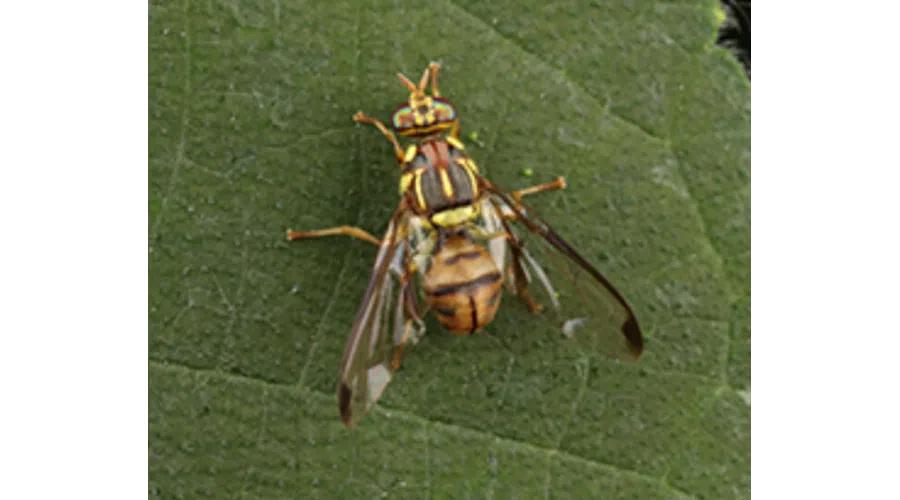
Tau fruit fly has been detected in Los Angeles county, quarantine now in place
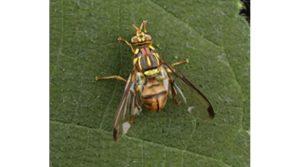
This the first Tau fruit fly quarantine ever in the Western Hemisphere. (Photo: Fan Gao, Courtesy CDFA)
SACRAMENTO — A portion of Los Angeles County has been placed under quarantine for the Tau fruit fly (Zeugodacus tau group) following the detection of more than 20 flies in the unincorporated area of Stevenson Ranch, near the city of Santa Clarita.
The quarantine area measures 79 square miles, bordered on the north by Castaic Junction; on the south by Oat Mountain; on the west by Del Valle; and on the east by Honby Ave. A link to the quarantine map may be found here: https://www.cdfa.ca.gov/
This the first Tau fruit fly quarantine ever in the Western Hemisphere. The fly is native to Asia and is a serious pest for agriculture and natural resources, with a very wide host range, including numerous fruits and vegetables as well as a select range of native plants in California.
It’s believed the fly was introduced by travelers bringing uninspected produce into the state — a common pathway for invasive species.
To prevent the spread of this invasive species, residents living in the quarantine area are urged not to move any fruits and vegetables from their property. They may be consumed or processed (i.e. juiced, frozen, cooked, or ground in the garbage disposal) at the property where they were picked. Otherwise, they should be disposed-of by double-bagging in plastic and placing the bags in a bin specifically for garbage.
Following the principles of Integrated Pest Management, the California Department of Food and Agriculture, working in cooperation with the United States Department of Agriculture and the Los Angeles County Agricultural Commissioner, will utilize a multi-tiered approach to eliminate the Tau fruit fly and prevent its spread to new areas. On properties within 200 meters of detections, staff will cut host fruit and vegetables to inspect for any fruit fly larvae that may be present. Additionally, properties within 200 meters of detections will be treated with a naturally derived organic-approved material known as Spinosad, which will help remove any live adult fruit flies and reduce the density of the population. Finally, fly traps that incorporate a pheromone lure and a minute amount of pesticide will be used in a wider part of the treatment area.
Further information about this invasive species is available online at: https://www.cdfa.ca.gov/
Article courtesy of Morning Ag Clips
Original URL: https://www.morningagclips.com/new-invasive-species-arrives-in-california/

